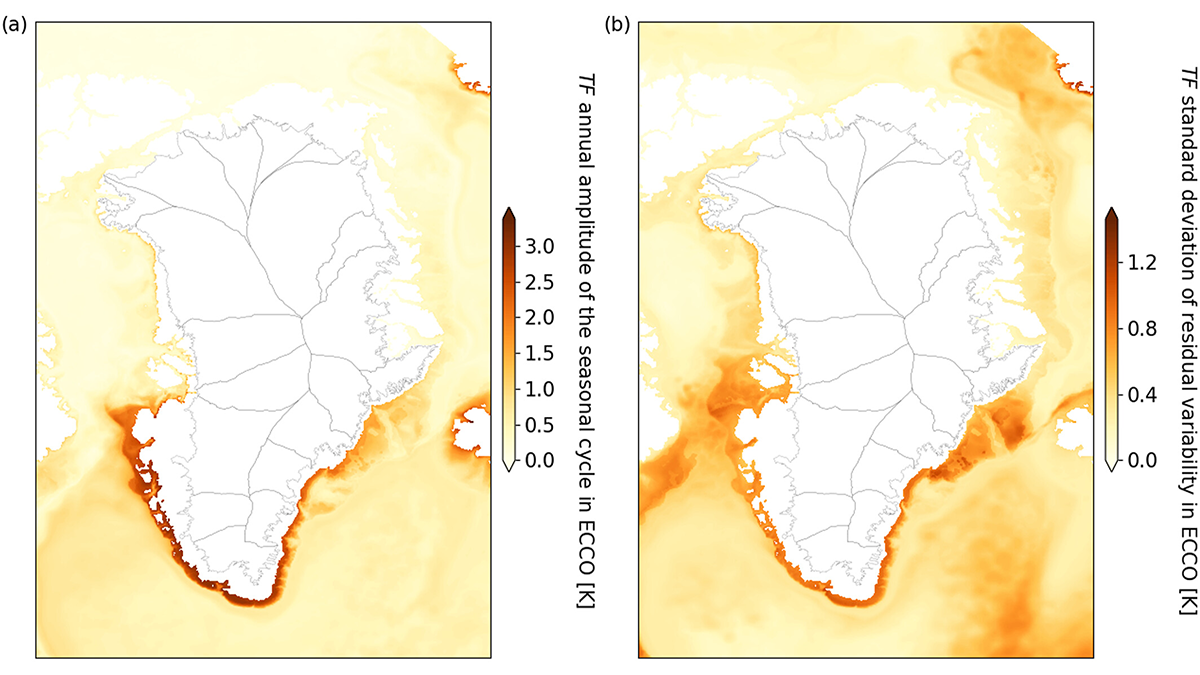Editors’ Highlights are summaries of recent papers by AGU’s journal editors.
Source: Journal of Advances in Modeling Earth Systems
Projecting future sea level rise from ice sheet melt is commonly attempted using oceanic temperature simulations from coarse-resolution general circulation models (GCMs). But those global models do not reliably capture either the full suite of processes or the spatial variability of water conditions actually affecting glacier margins.
Verjans et al. [2023] make a significant leap forward in this area. They develop a statistical approach that first bias-corrects GCM outputs using ocean reanalysis data, then applies a parameterization from high-resolution ocean models to extrapolate open ocean temperatures into the narrow fjords around the Greenland Ice Sheet margin. Finally, by adding a random noise signal, their downscaling approach also more accurately reproduces the natural variability of fjordal environments. The combined advances in both spatial and temporal resolution address a problem that researchers have grappled with for a long time, and by establishing this new proof-of-concept, the authors have paved the way for new approaches to be employed in future ice-sheet modeling intercomparison projects.
Citation: Verjans, V., Robel, A., Thompson, A. F., & Seroussi, H. (2023). Bias correction and statistical modeling of variable oceanic forcing of Greenland outlet glaciers. Journal of Advances in Modeling Earth Systems, 15, e2023MS003610. https://doi.org/10.1029/2023MS003610
—Nicholas Golledge, Associate Editor, JAMES

